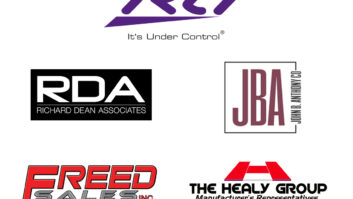Something odd is happening in the tablet business and in what will be going on at CES next month where tablets are concerned – or, more precisely, what won’t be happening at CES where tablets are concerned.
You’ll likely see tablets at the Intel and Microsoft exhibits as well as at the Samsung and LG booths. But most other leading tablet vendors — such as Acer, Dell, HP, Lenovo and Toshiba — will announce new models not on the show floor itself but off site at peripheral events or hospitality suites.
What’s not happening on the show floor in the tablet market isn’t as weird as what is happening to the tablet market itself. In these days of large two-in-one touchscreen devices with detachable keyboards or 360-degree rotating touchscreens, it’s getting difficult to define “tablet” with any definitiveness.
“The market is trying to blur the line. That is clear,” said Robert Heiblim, founder of Blue Salve Consulting. “Led by Microsoft and its line of Surface devices, they and other makers are directly comparing their [two-in-one] items to tablets.”
Sure, they’re comparing these hybrids to tablets, but are these hybrids really tablets?
“Acer is defining a tablet as a mobile computing device with a touchscreen display that is meant to be the primary input device,” an Acer spokesperson told us.
Okay, so can a laptop be considered a tablet if its rotatable screen can be flipped behind the keyboard for use as a tablet touchscreen? “If the device is capable of operating fully without the use of a keyboard, then it is a tablet,” said John Devlin, associate senior analyst at Futuresource. “Where it may get difficult again at the top end for larger screen sizes is with possible overlap with two-in-one PCs.”
So, again, are we counting all two-in-ones as tablets? Not all of them, says Strategy Analytics. “A laptop that can spin around or fold funny ways is still a laptop to us,” said Eric Smith, the company’s senior tablet and touchscreen analyst.
Fortunately, there seems to be a consensus forming within the tablet counting community on what constitutes a tablet. Both Strategy Analytics and IDC, for instance, include slate tablets and detachable notebooks when they report tablet sales and forecasts, but not convertible notebooks with keyboards that fold behind the touchscreen.
But “form factors will evolve and industry analysts will need to take another look at it eventually,” warned Jean Philippe Bouchard, IDC tablets research director, As thusly defined, tablet sales have been dropping steadily, IDC said. The research company reported that worldwide tablet shipments would reach 211.3 million units in 2015, down 8.1 percent from 2014.
Growth in detachable notebooks, however, is keeping combined sales from falling faster, says Strategy Analytics. In North America, Strategy Analytics expects shipments of “slate” tablets will fall 13 percent in 2015 and rebound by 5 percent in 2016, while detachable growth will jump 360 percent in 2015 before slowing to 48 percent in 2016. Combined North American shipments of both types will decline 10 percent in 2015 but will rebound to modest growth in 2016, the company said.
“We’re witnessing a real market transition as end users shift their demand toward detachables and more broadly toward a productivity-based value proposition,” said IDC’s Bouchard. “The proliferation of detachable offerings from hardware vendors continues to help drive this switch.” That’s why IDC is confident that sales of detachables will hockey stick more than 75 percent in 2016.
Overall, IDC also projects that sales of larger screen tablets will continue to rise.
For its part, Strategy Analytics sees sales of lowpriced 7-inch Android models trending down thanks to pressure from phablets, while sales of pricier larger screen models are moving in the opposite direction. Shipments of 9- to 10-inch tablets and detachable notebooks sank 16 percent in 2015 in the U.S. but will rise 32 percent in 2016, the company said.
The big loser in the tablet marketplace looks to be Android. Although Google’s OS will still represent the majority of tablet sales, its peak days are behind it.
“It’s almost impossible for Android to compete in the premium segment [$650 and higher],” said Eric Smith, senior tablet and touchscreen analyst at Strategy Analytics. “Its market share in this segment has never passed 10 percent. iOS and Windows compete fiercely here.”
Microsoft finally seems to be winning in the premium segment, Smith added. In 2015 Windows shipments surpassed iOS shipments in the premium segment for the first time in North America – 52 percent to 43 percent for iOS, with the gap widening to 57-43 in 2016.
That’s assuming you define two-in-ones as tablets– if that even matters. “Consumers don’t care what the device is called,” Smith sighed. “They just want something that is going to meet their needs at the right price.”













